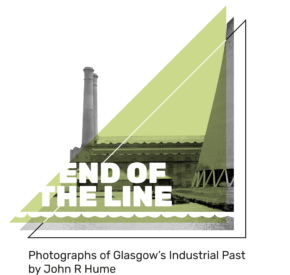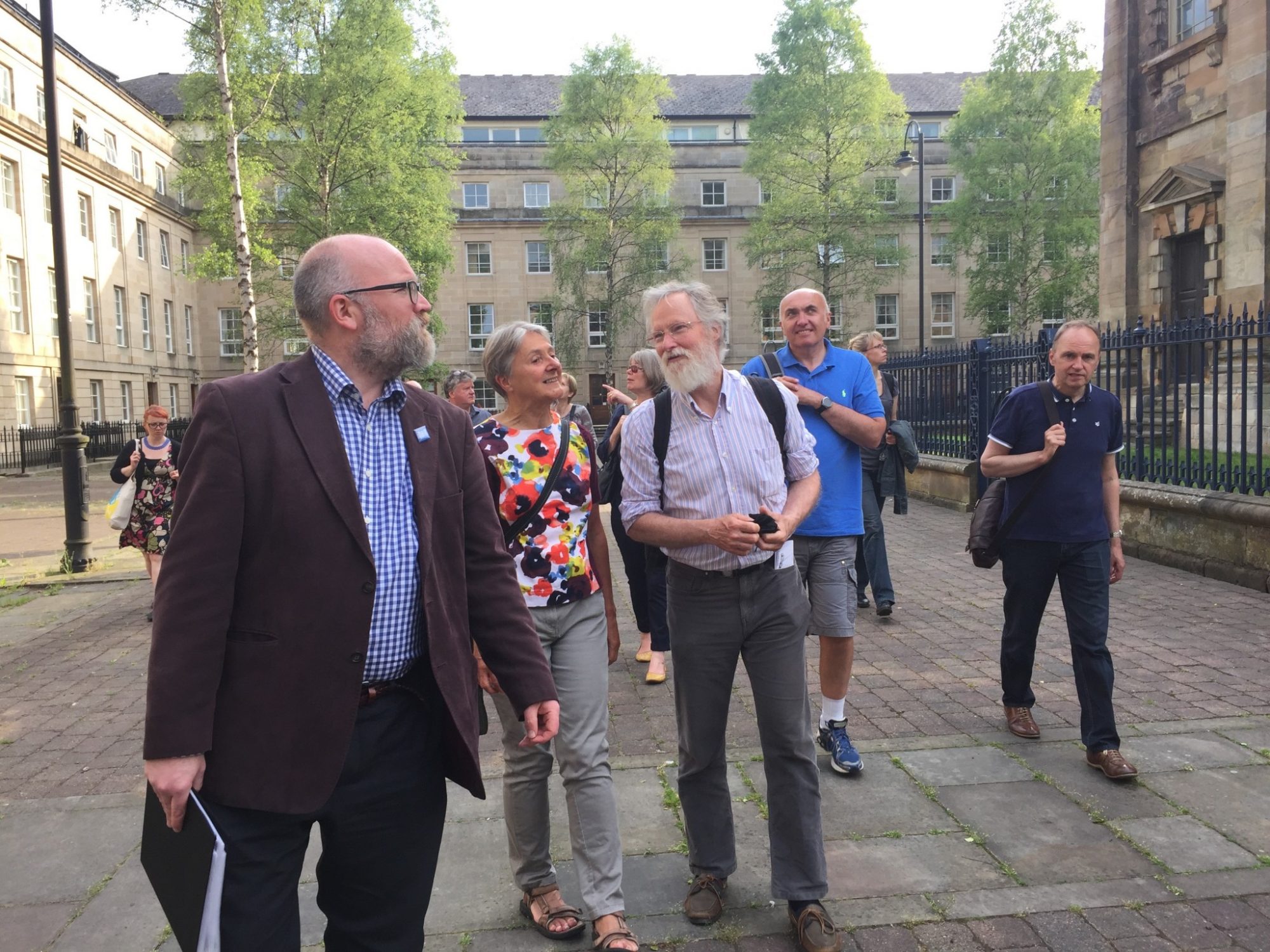 John R Hume first started documenting Glasgow’s industrial buildings in 1964. Wandering the city by bicycle, he was determined to get images of as many of the city’s decaying industrial buildings as possible before they disappeared. He was just in time.
John R Hume first started documenting Glasgow’s industrial buildings in 1964. Wandering the city by bicycle, he was determined to get images of as many of the city’s decaying industrial buildings as possible before they disappeared. He was just in time.
END OF THE LINE EXHIBITION, SUMMER 2019
In the summer of 2019, GCHT created the exhibition End of the Line: Photographs of Glasgow’s Industrial Past by Professor John R Hume. People came to see the exhibition for a variety of reasons, including personal memories of the buildings photographed, an interest in industrial heritage or photography, and curiosity about the former Tax Hall as many people had never seen inside the building. Running from 25th July until 5th September, the exhibition had over 1,200 visitors in just six weeks.
This is the first time that these images, many of which were originally included in John R Hume’s book Industrial Archaeology of Glasgow (Blackie, 1974), had been exhibited together on a large scale. The powerful black and white photographs demonstrate the monumentality and ambition of Glasgow’s industrial buildings, as well as the diversity of architectural styles; they span neo-gothic, neoclassical, and Venetian to name a few. The viewer is encouraged to admire the intricate architectural details of each building and to imagine the lives of the people who may have worked there.
AUDIO TOUR & INTERACTIVE MAP
An audio tour of selected highlights of the exhibition by John R Hume is available online.
GLASGOW’S INDUSTRIAL HERITAGE CAPTURED
The dramatic changes in Glasgow’s urban fabric since the 1960s were in large part a consequence of the decline of industry after the Second World War. Postwar government policies, such as clearances for Comprehensive Development Areas and the creation of the M8 urban motorway, virtually flattened areas of the city including the Gorbals, Hutchesontown, Anderston and Bridgeton. The photographs in End of the Line represent the enormity of the loss of Glasgow’s industrial heritage: every building depicted has subsequently been demolished.


